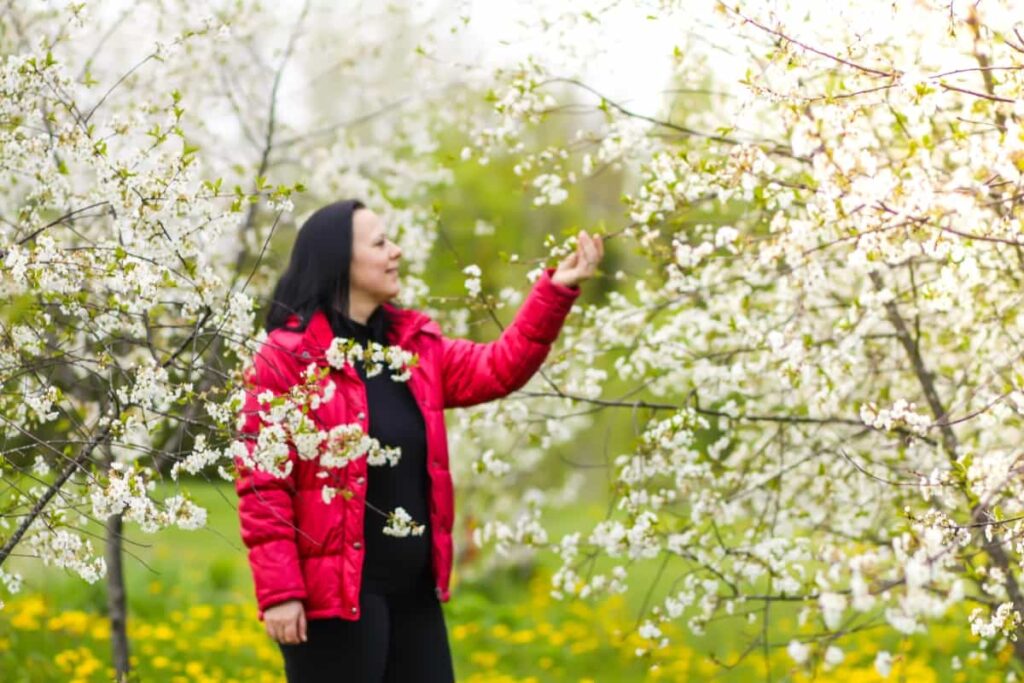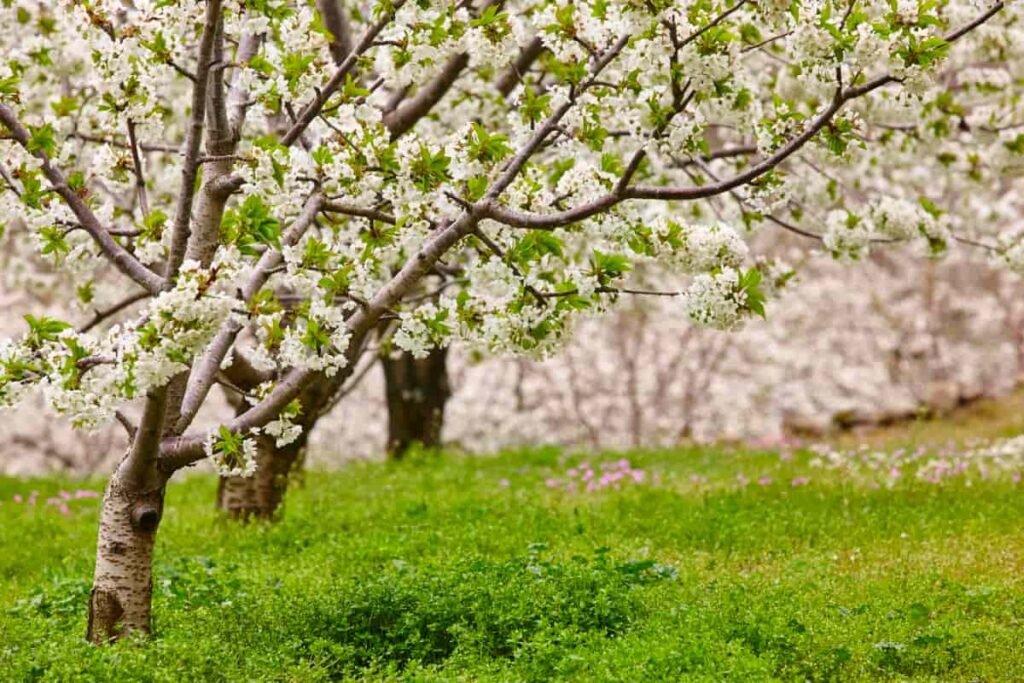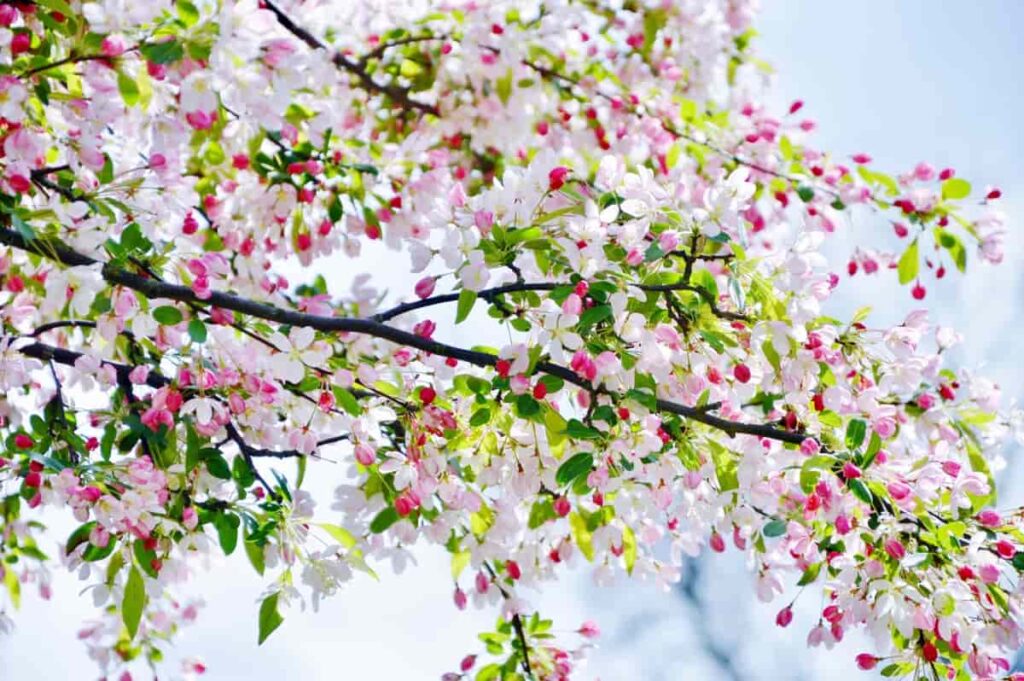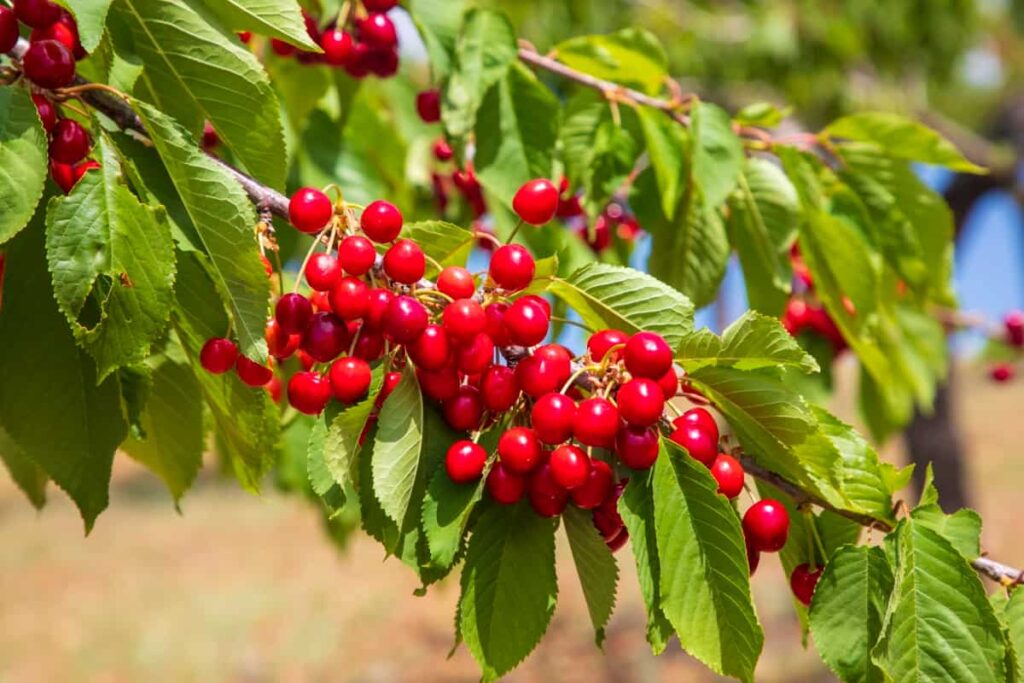Cherry trees are beautiful and productive fruit trees, but they require careful attention to their pollination needs. Pollination transfers pollen from male part of a flower to female part, allowing fertilization and fruit development. There are two main types: sweet cherries, which are eaten fresh, and sour cherries, which are used for pies, jams, and other products.

Sweet cherries are self-incompatible, needing pollen from different cherry tree varieties, while sour cherries can pollinate themselves. Cherry trees bloom in early spring with white or pink flowers with five petals and many stamens. They require pollination by insects, mainly bees, during a short blooming period. The best time for pollination is when flowers are fully open, and the weather is dry and calm.
Cherry Tree Pollination
The Importance of Pollinators in Cherry Tree Growth
Pollinators are animals that transfer pollen from one flower to another, enabling fertilization and fruit formation. Cherry trees require cross-pollination to produce fruits, with most varieties requiring pollen from different but compatible cultivars. Only a few cherry varieties are self-fertile, producing fruits with their pollen.
Honeybees are the main pollinators, but other insects like bumblebees, mason bees, and hoverflies can also help. Honeybees are preferred due to their efficiency, abundance, and ease of management. They visit flowers in the morning, collecting nectar and pollen and transferring some of the pollen to other flowers, resulting in cross-pollination.
Cherry Blossoms and Their Role in Pollination
Cherry blossoms, the flowers of cherry trees, appear in spring and play a crucial role in pollination. They attract pollinators with their color, scent, and nectar and provide pollen, the male reproductive cell of plants. Cherry blossoms have five petals and a central cluster of stamens and pistils, with the stamens producing pollen and the pistils receiving pollen and forming fruits.
Each blossom has one pistil and many stamens, with the pistil consisting of an ovary, style, and stigma. Pollen from insects or wind catches the stigma, which fertilizes ovules, which develop into seeds and, eventually, cherries.
Cherry Tree Pollination Methods: What Works Best?
Cherry tree pollination involves three main methods: natural, artificial, and grafting. Natural pollination involves honeybees transferring pollen from one flower to another, which is the most common and preferred method due to its simplicity, effectiveness, and cost-effectiveness. However, factors like weather, bee population, flower availability, compatibility, and flower overlap can affect its success.
Artificial pollination involves humans manually or mechanically transferring pollen from one flower to another, either by hand or using a blower, sprayer, or vibrator. Grafting, on the other hand, involves:
- Attaching a branch or bud of one cultivar to another.
- Creating self-fertile cherry trees.
- Increasing the diversity of cherry varieties
- It can also improve vigor, disease resistance, and fruit quality but requires skill, time, and care to ensure successful union and growth.
Cherry Varieties and Their Pollination Requirements
Cherry varieties are sweet and sour. Sweet cherries are typically consumed fresh or used in desserts, while sour cherries are used in cooking or processing. Sweet cherries are mostly self-sterile and require cross-pollination to produce fruits. Only a few self-fertile varieties can produce fruits with their pollen.
In case you missed it: Best Fertilizer for Cherry Trees: Organic, Natural, Homemade, NPK Ratio, and Schedule

Most sweet cherry varieties require a compatible cultivar for cross-pollination, which is a different pollen group with a similar or overlapping bloom time. Sour cherries, on the other hand, are mostly self-fertile but can benefit from cross-pollination with another sour cherry variety or a compatible sweet cherry variety. This can increase the fruit size, yield, and quality of sour cherries. Examples of sour cherry varieties include Montmorency, Morello, North Star, Surefire, and Sweet Cherry Pie.
Maximize Cherry Tree Yield Through Effective Pollination
- Choose compatible cultivars for cross-pollination, planting at least two within 100 feet of each other.
- Provide adequate pollinators for natural pollination, such as honeybees or other insects. Rent or buy honeybee hives near the cherry trees during bloom time. One hive per acre is usually enough for good pollination.
- Enhance pollinator activity by providing water, shelter, and alternative food sources. Avoid spraying pesticides or herbicides near the cherry trees during bloom time.
- Perform artificial pollination if natural pollination is insufficient or unreliable. Collect pollen from one cultivar and transfer it to another using various tools.
Challenges in Cherry Tree Pollination: Solutions and Tips
Cherry tree pollination faces challenges due to the non-fertility of some cherry varieties, such as Bing, Rainier, and Royal Ann, which require cross-pollination from compatible varieties. To ensure successful pollination, at least two cherry trees of different varieties or a combination tree should be planted within 100 feet of each other. Honeybees play a crucial role in cherry tree pollination but are sensitive to weather conditions and may not visit flowers during cold, windy, rainy, or cloudy conditions. Therefore, a favorable environment is essential.
The Science Behind Cherry Tree Pollination
Cherry tree pollination is a complex process that involves several steps. First, cherry flowers release their pollen in early spring, which is sticky and heavy, making it difficult for honeybees to travel far by wind. Honeybees collect pollen on their bodies, preferring flowers of the same species or variety and visiting them in the morning when nectar flow is highest.
The pollen then deposits on the stigma of another flower, which is the sticky part of the female reproductive organ that receives the pollen. The pollen must be compatible with the stigma, ensuring it will germinate and fertilize the ovule. The pollen then germinates and grows a tube down the style of the flower, connecting the stigma and ovary. The tube carries two sperm cells that fertilize the ovule in the ovary.
Timing is Everything: When to Pollinate Cherry Trees
Cherry tree pollination is crucial for fruit production, as cherry flowers are only receptive for 3-5 days after opening. To ensure fruit formation, it’s essential to match the bloom times of different cherry varieties. Cherry varieties are classified into early (E), mid (M), or late (L) groups based on their bloom times. A cherry pollination chart or table can help find compatible varieties that overlap in bloom time.
In case you missed it: Plum Fruit Orchard Management: A Comprehensive Month-wise Maintenance Guide

The Impact of Weather on Cherry Tree Pollination
Cherry flowers and honeybees require specific conditions for optimal growth and activity. They require a minimum temperature of 50°F (10°C) for pollen release and 55°F (13°C) for honeybees to fly and visit flowers. A moderate humidity level of 40-60% is essential to prevent pollen dehydration and nectar evaporation. A gentle breeze of 5-10 mph (8-16 km/h) is necessary for flower dispersal and bee navigation.
Dry weather is essential for pollen washout, fungal infection, and wing damage. Overly frequent or heavy rainfall can reduce pollen transfer and bee survival. Bright sunlight is essential for color enhancement, nectar production, and foraging. Dim or cloudy sunlight can lower flower visibility and bee efficiency. In summary, the right conditions are crucial for the growth and survival of cherry flowers and honeybees.
DIY Cherry Tree Pollination for Home Gardeners
To pollinate your cherry tree, use a soft brush, cotton swab, or your finger to transfer pollen from one flower to another. You can also collect pollen from another tree or buy it online. The best time to pollinate is in the morning when flowers are fully open and fresh. Avoid pollinating during cold, windy, rainy, or cloudy weather. Pollinate as many flowers as possible to increase the chances of fruit set.
In case you missed it: Best Fertilizer for Plum Trees: Organic, Natural, Homemade, NPK Ratio, and Schedule

Conclusion
Cherry tree pollination is a crucial process where pollen from male flower parts transfers to female parts, fostering fruit development. Bees, wind, or even human assistance aid this transfer. Successful pollination results in the growth of cherries. Understanding this process is vital for optimal fruit yield and orchard management.
- Sheep Farming Business Plan for Beginners
- Aquaponic Farming at Home: A Step-By-Step Guide
- Profitable Village Farming Business Ideas in 2024
- High-Yield Aquaculture: Fast-Growing Fish for Farming
- Effective Fish Pond Construction Techniques for Beginners
- Irrigation and Water Management in Pineapple Farming
- Blossom to Harvest: Mastering Flowering and Pollination in Papaya Farming
- Pig Fattening Essentials: From Selection to Sale for Beginners
- Raising Wagyu Cattle: A Complete Guide for Premium Beef Production
